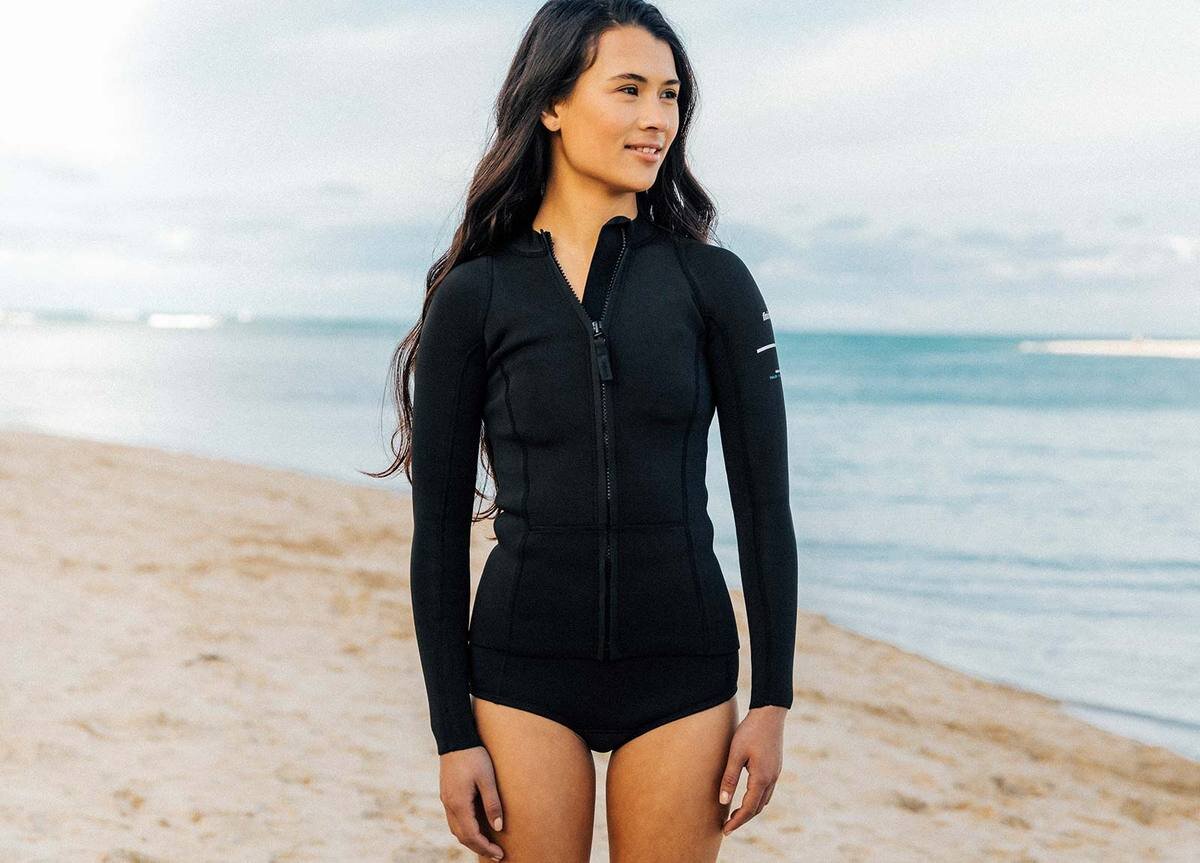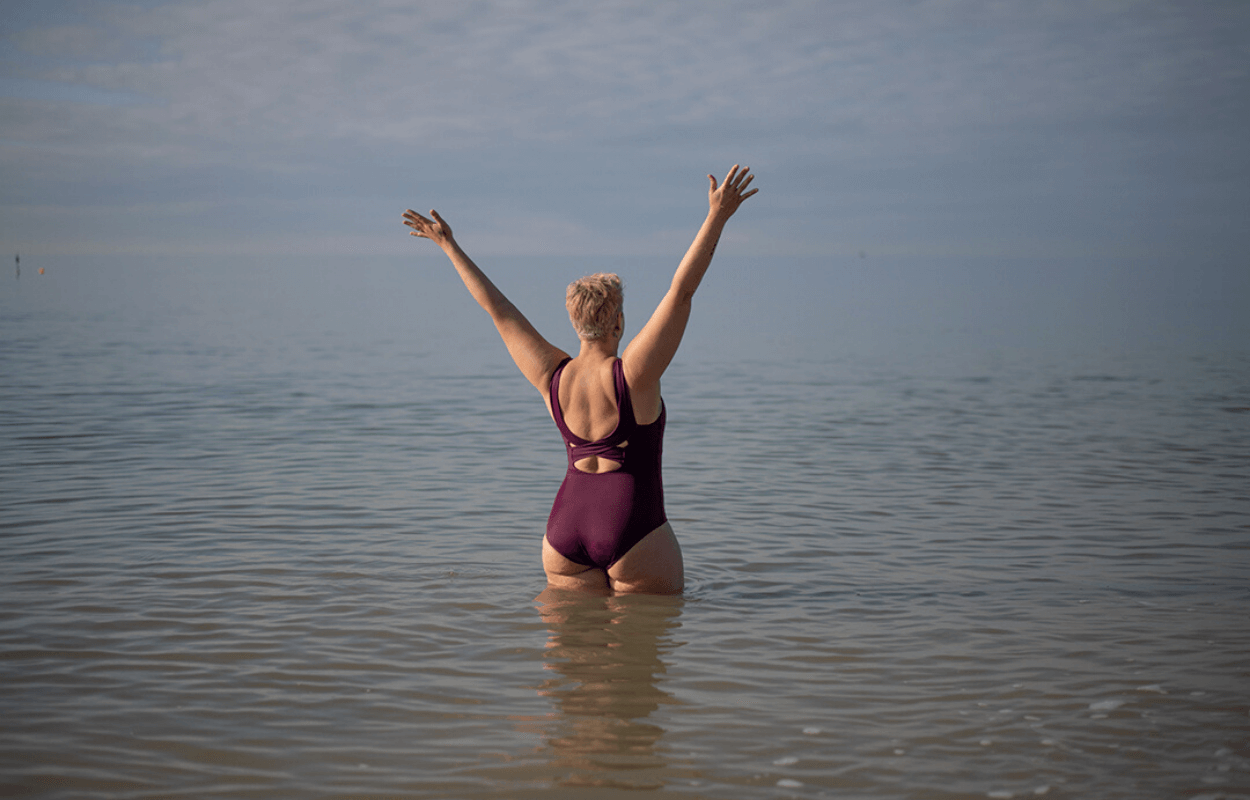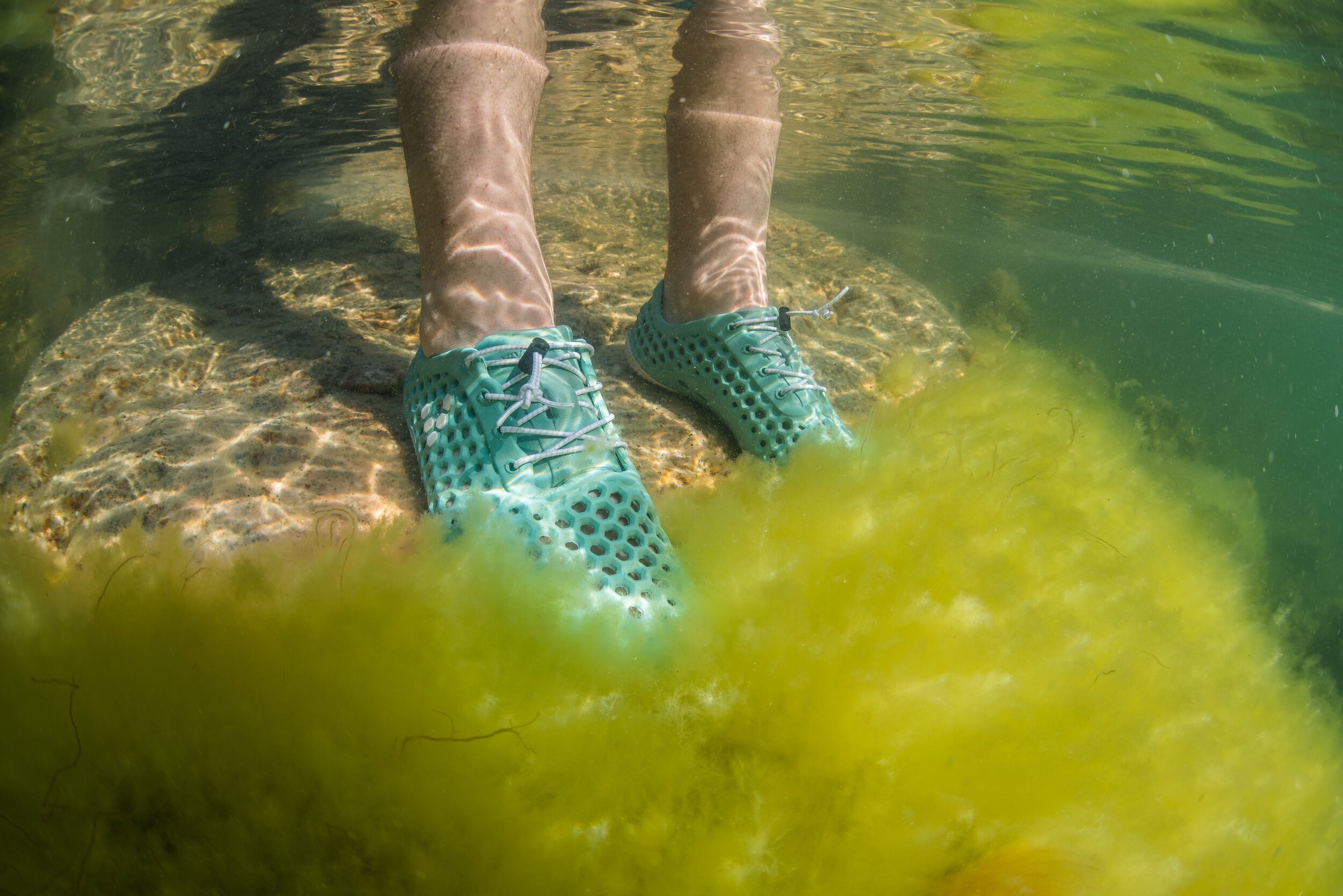ECO-WILD SWIMMING
If you haven’t heard: cold water is where it’s at. Be it in the sea, lake, river, pond, local lido or embracing the shocking meditative waters of an ice bath (such as an ice cube-filled bathtub in the garden) like Joe Wicks — social media shows us that lots of people are getting in on the action in some way, shape or form.
Combine the plunge with some breathwork a la Wim Hof or Tony Riddle and you have a natural endorphin and energy rush like no other. I’ve played around with ice showers after saunas in the past in the name of a spa day and have ventured into some freezing waters for modelling jobs, but the idea of year-round outdoor submersions doesn’t float my boat and I’m sure would do nothing for my Vata Dosha which I have to be mindful about keeping in check. That being said, on a hot summer’s day or balmy eve, a wild swimming lake or pond can often appeal and it’s in this situation where the benefits definitely outweigh any discomfort. Lucky for me, my local park has spent the last couple of years reinstating a natural swimming lake. Conscious planning was needed to make sure that the lake could take care of itself as a freshwater site without a filter as it can be prone to stagnation and putrefaction if not properly balanced. Native water plants were introduced and the mallards, coots and Canadian geese made it home or a service station stop-over as part of their winter journey south in no time. The new spot has attracted a lot of cold water dipping and swimming enthusiasts who want to double up on nature versus the gym - you can find your local wild swimming spot here. With a trend in wellbeing comes a fashion opportunity and you may well have spotted a dry robe or two (even being worn down the high street) — essential for pre-dip changing and post-dip anti-hypothermia. Other swimming gear includes swimming costumes of the more practical variety rather than the posing variety and footwear which can be easily slipped on and off.
Here I’m sharing a little eco roundup to perhaps tempt you into giving wild swimming a try.
DRY ROBES
SITTINGSUITS (which I’m wearing in the above) make the padding for their jackets from 100% post-consumer recycled plastic bottles, which has been transformed into new fibres. It is certified by Global Recycled Standard whilst the outer fabric is certified STANDARD 100 by OEKO-TEX®️ — one the world's best-known labels for textiles tested for harmful substances. SITTINGSUITS work with ECOCART to empower their consumers to make their orders 100% carbon neutral by offsetting the carbon produced from the shipment of their order.
Passenger’s coat is made from 100% recycled single-use plastic bottles with a PFC-free water-resistant coating. It also features 80g recycled polyester insulation and a full sherpa towel lining. For every Passenger product sold the brand plants a tree.
RASH GUARDS/T-SHIRTS/SWIMSUITS
Finisterre
This top, specifically designed for cold water swimmers, is made from a natural rubber innovation called Yulex, which requires ten times less water in production and reduces CO2 emissions by up to 80%, when compared with traditional neoprene.
Like Finisterre, Patagonia have used Yulex for this wetsuit set, this time in combination with a smaller percentage of synthetic rubber. 83% of Patagonia’s range is Fair Trade Certified™ sewn.
This flattering one-piece has been made in London from ECONYL®, a fabric made from regenerated ocean plastic. It’s also been designed for more active pursuits (like cold water swimming) thanks to its high level of support.
Deakin and Blue
With built-in support and a flattering scoop back, this swimsuit is ideal for proper swimming but also a staple for your swim wardrobe. It too has been made in London from ECONYL® and is soft, stretchy, light and breathable.
Rubymoon
Made ethically & sustainably from recycled ocean plastics, this top has been tested to ensure its durability, it’s also certified STANDARD 100 by OEKO-TEX®️.
SHOES
Vivobarefoot
VIVOBAREFOOT
I’m a big Vivobarefoot fan — their shoes are designed to give you a walking experience as close to being barefoot as possible. These land and water shoes are made from BLOOM® foam, which takes harmful algae blooms out of waterways, reversing the effects of water pollution. Currently only 5% algae are used in order to reach performance standards, but Vivo are working closely with BLOOM® and other partners with the goal to make fully bio-based and circular for re-use and/or compostable footwear in the future.
Kengos shoes are 87% plant-based (with a goal of reaching 100% by 2022). The uppers are made from corn blended with eucalyptus to create a knit upper that’s super soft on the inside yet sturdy and durable on the outside. The midsole is made from the bark of cork trees in southern Portugal, and is a fully self-generating resource. This is mixed with natural latex for flexibility and co-molded with cotton (using no glue!) for a cushy, comfortable texture. The outsole is made from natural rubber, the stitching and shoelaces are made from Amaize corn, and both are coated with a potato starch-based wax for added strength and stain resistance.
For more sustainable fashion picks, head over to FASHION WITH FEELING here.






